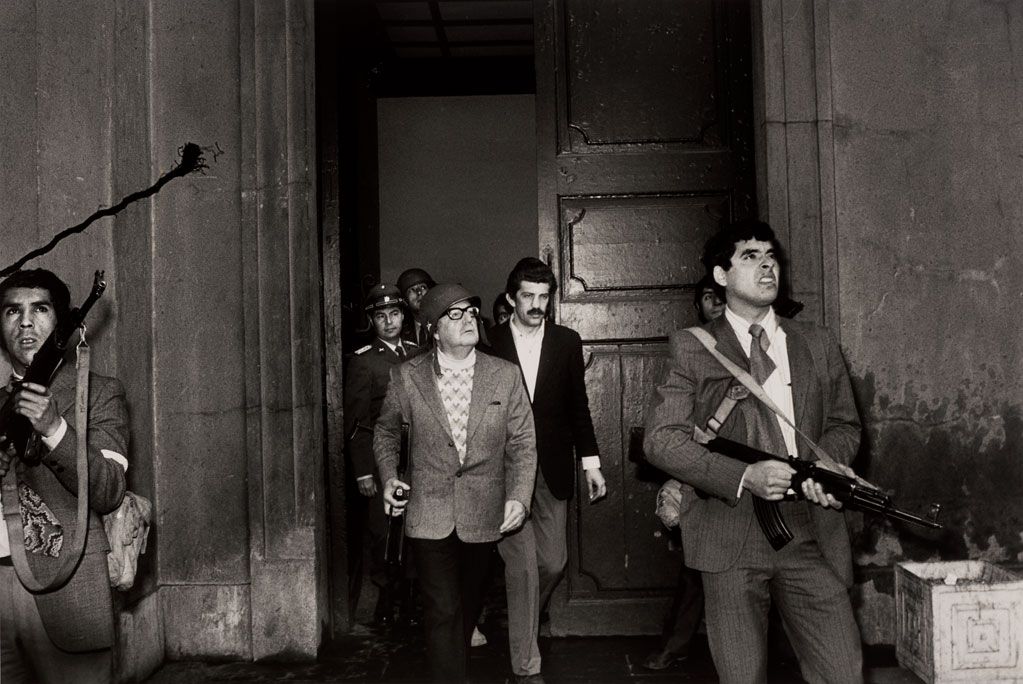A Few Tips on How to Understand Latin American Coups
From ousting of Árbenz to Allende and now Morales, Latin America has seen a lot of right-wing coups. Here's historian Greg Grandin with some tips on how to understand what you're seeing in Bolivia today.

The last photograph of Salvador Allende inspecting the presidential palace shortly before his death.
- There has never been a coup in Latin America where the president being overthrown wasn’t considered “problematic.” (Yes, not even Allende.)
- There has never been a coup in Latin America that didn’t have some degree of popular support — support not linked to CIA or international capital. (Yes, not even the one against Arbenz, the two against Aristide, or the ones against Lugo and Zelaya.)
- If the military intervenes after the president agrees to protest demands — as what happened in Bolivia, when Evo Morales agreed to new elections — it is a coup. Pretty much anytime the military intervenes to change regimes, it is a coup.
- The main driver of destablization need not be the CIA or international capital for the outcome of the coup to benefit international capital (and, in the case of Bolivia, lowland white supremacists).
- On the above, read Hegel on the “cunning of reason.”
- When assessing comparable negatives of the contending sides vying for power — always a good exercise when you want virtue signal your “nuanced” position distinct from evil rightists and ideological leftists — don’t forget to weigh the future in your deliberations. For instance, a few years ago in Brazil, a number of leftists pointed out that the Workers Party (PT) was indeed corrupt and cut off from its base. Now, as we hurtle toward the climate apocalypse and see the nature of Bolosonaro, perhaps we’d assign a few more points to the PT side of that conflict.